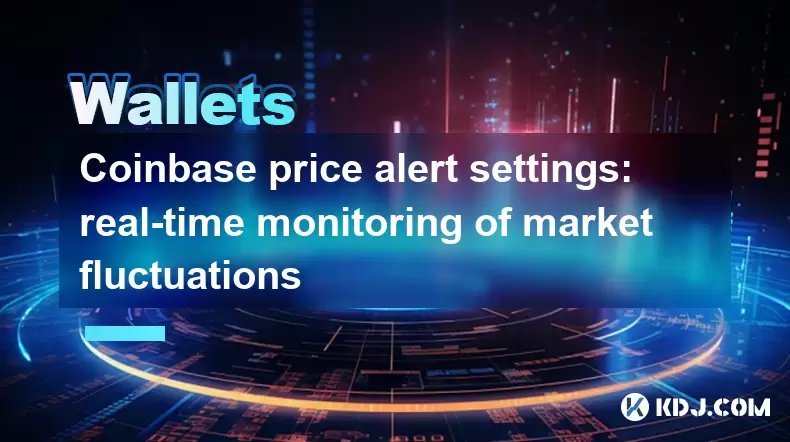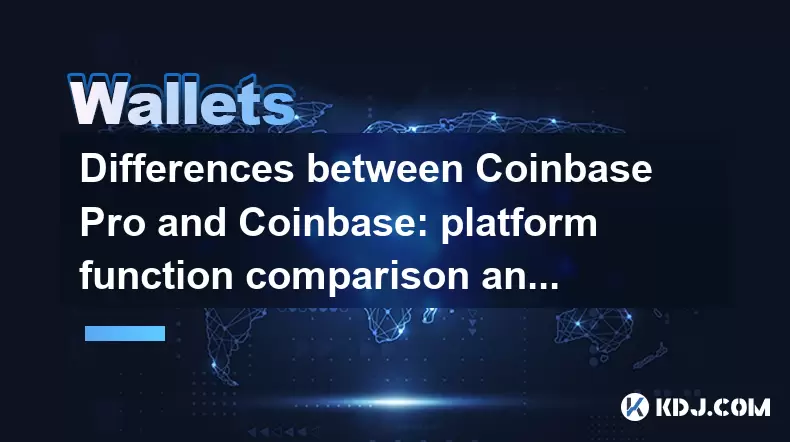-
 Bitcoin
Bitcoin $107,341.7259
0.15% -
 Ethereum
Ethereum $2,438.6204
0.70% -
 Tether USDt
Tether USDt $1.0003
-0.02% -
 XRP
XRP $2.1866
1.94% -
 BNB
BNB $649.0952
0.36% -
 Solana
Solana $150.9602
5.63% -
 USDC
USDC $0.9999
0.00% -
 TRON
TRON $0.2742
0.40% -
 Dogecoin
Dogecoin $0.1645
1.93% -
 Cardano
Cardano $0.5669
1.18% -
 Hyperliquid
Hyperliquid $37.8286
4.19% -
 Bitcoin Cash
Bitcoin Cash $491.4669
-2.74% -
 Sui
Sui $2.8150
3.06% -
 Chainlink
Chainlink $13.4184
2.91% -
 UNUS SED LEO
UNUS SED LEO $9.0809
0.27% -
 Avalanche
Avalanche $18.0295
2.60% -
 Stellar
Stellar $0.2396
1.19% -
 Toncoin
Toncoin $2.8587
0.13% -
 Shiba Inu
Shiba Inu $0.0...01160
2.59% -
 Litecoin
Litecoin $86.4192
1.45% -
 Hedera
Hedera $0.1486
1.19% -
 Monero
Monero $308.4324
0.87% -
 Polkadot
Polkadot $3.4202
1.43% -
 Bitget Token
Bitget Token $4.6436
-0.34% -
 Dai
Dai $0.9998
-0.02% -
 Ethena USDe
Ethena USDe $1.0002
0.00% -
 Uniswap
Uniswap $7.1527
3.29% -
 Pi
Pi $0.5357
-8.45% -
 Pepe
Pepe $0.0...09588
4.61% -
 Aave
Aave $259.9759
0.81%
How to export a BTC wallet address on Trezor?
Trezor's robust security keeps your BTC private keys offline; use the device or Trezor Suite to view and generate new public BTC addresses for receiving funds safely.
Apr 01, 2025 at 09:15 pm

Understanding Trezor and BTC Wallet Addresses
Trezor is a popular hardware wallet known for its robust security features. It protects your Bitcoin (BTC) private keys offline, making it significantly more secure than software wallets. Your BTC wallet address, however, is not a private key. It's a publicly accessible identifier used to receive BTC. You don't "export" a private key from a Trezor; doing so would compromise your funds. Instead, you access and view your BTC addresses directly on the device or through its associated software.
Accessing Your BTC Wallet Address on Trezor
The process for viewing your BTC address on a Trezor device is straightforward and designed to prioritize security. There is no export function for the private key itself. Remember, your Trezor device is the only place your private keys should ever exist.
- Connect your Trezor: Connect your Trezor device to your computer using the provided USB cable.
- Launch Trezor Suite: Open the Trezor Suite software on your computer. Ensure you're using the official software downloaded from the Trezor website to avoid malicious software.
- Unlock your Trezor: Enter your PIN code on the Trezor device to unlock it.
- Select Bitcoin: In Trezor Suite, select Bitcoin from the list of supported cryptocurrencies.
- View Receive Address: You will see your Bitcoin receive address displayed. This is the address you provide to others to send you Bitcoin. This address can change if you generate a new one.
Generating a New BTC Receive Address
Using a new address for each transaction enhances privacy and security. While not strictly an "export," generating a new address effectively provides you with a fresh address to share.
- Navigate to the Receive Tab: In Trezor Suite, navigate to the "Receive" tab for your Bitcoin wallet.
- Generate a New Address: Click on the "Generate new address" button. A fresh Bitcoin address will be displayed.
- Copy the Address: Copy the new address and share it with the sender. Never reuse old addresses if you value privacy.
Understanding the Difference Between Public and Private Keys
It is crucial to understand the difference between a public key (your BTC address) and a private key. Your public key (BTC address) is like your bank account number – you can share it freely. Your private key is like your bank PIN – it must remain absolutely secret and should never be revealed to anyone. Losing your private key means losing access to your Bitcoin. Trezor protects your private keys by keeping them securely stored within the device itself.
Security Best Practices for Your Trezor and BTC
Maintaining the security of your Trezor device and your Bitcoin is paramount. Always follow these best practices:
- Only download Trezor Suite from the official Trezor website. Beware of phishing attempts that might lead you to download malicious software.
- Never share your PIN code with anyone. Trezor will never ask for your PIN code.
- Use a strong and unique password for your Trezor Suite account.
- Regularly update your Trezor firmware and Trezor Suite software. Updates often include crucial security patches.
- Store your recovery seed phrase in a safe and secure location offline. This phrase is crucial for recovering access to your Bitcoin if you lose or damage your Trezor device. Never store it digitally.
Frequently Asked Questions
Q: Can I export my BTC private key from Trezor?
A: No. Trezor is designed to keep your private keys secure within the device. Exporting them would defeat the purpose of using a hardware wallet. You only need to use and view your public address (BTC address).
Q: What if I lose my Trezor device?
A: If you lose your Trezor, you can recover your Bitcoin using your recovery seed phrase. This is why securely storing your seed phrase offline is so critical.
Q: Why should I use a new BTC address for each transaction?
A: Using a new address for each transaction enhances your privacy by making it more difficult to link your transactions together.
Q: Is it safe to use Trezor?
A: Trezor is widely considered a secure hardware wallet, but like any security system, it's not foolproof. Following best security practices is essential to minimize risk.
Q: Where can I find more information about Trezor security?
A: The official Trezor website provides comprehensive information on security practices and troubleshooting. Always refer to official sources for accurate information.
Q: What happens if someone gets my BTC address?
A: Someone having your BTC address allows them to send Bitcoin to you. They cannot access your funds or steal your Bitcoin unless they also possess your private key. Your private key is never revealed when you provide your public BTC address.
Disclaimer:info@kdj.com
The information provided is not trading advice. kdj.com does not assume any responsibility for any investments made based on the information provided in this article. Cryptocurrencies are highly volatile and it is highly recommended that you invest with caution after thorough research!
If you believe that the content used on this website infringes your copyright, please contact us immediately (info@kdj.com) and we will delete it promptly.
- Ruvi AI: The Audited Token Primed to Lead the Bull Run, Outshining Competitors
- 2025-06-29 06:30:13
- Ruvi AI: The Smart Shiba Inu? Token Rally Potential Examined
- 2025-06-29 06:30:13
- Bitcoin, AI Tokens, and Ruvi AI: What's the Deal?
- 2025-06-29 06:50:12
- Cryptos with Real-World Utility and Growth Potential: Qubetics and Beyond
- 2025-06-29 06:35:13
- Ruvi AI, Dogecoin, and ROI: Decoding the Crypto Hype
- 2025-06-29 07:12:05
- Unstaked vs. Dogecoin & Ethereum: The Next Big Crypto Opportunity?
- 2025-06-29 07:15:12
Related knowledge

Coinbase price alert settings: real-time monitoring of market fluctuations
Jun 29,2025 at 07:00am
Setting Up Coinbase Price AlertsTo begin real-time monitoring of market fluctuations on Coinbase, users can utilize the built-in price alert feature. This function allows you to receive notifications when a cryptocurrency reaches a specific price point. To access this setting, open the Coinbase app or log in via the web platform. Navigate to the 'Prices...

How to stake cryptocurrencies on Coinbase? Benefits and risks
Jun 27,2025 at 06:36pm
Understanding Cryptocurrency Staking on CoinbaseStaking cryptocurrencies involves locking up digital assets to support the operations of a blockchain network, typically in return for rewards. Coinbase, one of the most popular cryptocurrency exchanges globally, offers staking services for several proof-of-stake (PoS) coins. Users can stake their holdings...

Differences between Coinbase Pro and Coinbase: platform function comparison and analysis
Jun 29,2025 at 08:21am
Overview of Coinbase and Coinbase ProWhen exploring the cryptocurrency trading landscape, users often encounter two platforms under the same parent company: Coinbase and Coinbase Pro. While both are operated by the same organization, they cater to different types of users and offer varying features. Coinbase is primarily designed for beginners and casua...

How to contact Coinbase customer service? Support channels and response times
Jun 28,2025 at 01:29pm
Contacting Coinbase Customer Service: Support Channels and Response TimesIf you're a user of Coinbase, reaching their customer service team may become necessary for various reasons, such as account verification issues, transaction disputes, or technical difficulties. Understanding the different support channels available and what to expect in terms of r...

Coinbase advanced trading function usage tutorial: limit orders and market orders
Jun 28,2025 at 09:07pm
Understanding the Difference Between Limit Orders and Market OrdersWhen using Coinbase's advanced trading features, it is crucial to understand the fundamental difference between limit orders and market orders. A market order executes immediately at the best available price on the market. This type of order ensures that your trade goes through quickly, ...

How to sell Bitcoin on Coinbase? Detailed transaction steps
Jun 29,2025 at 04:22am
Setting Up Your Coinbase Account for TransactionsBefore you can sell Bitcoin on Coinbase, you must ensure your account is fully set up and verified. Coinbase requires identity verification to comply with regulatory standards. This process involves uploading a government-issued ID, confirming your address, and sometimes submitting a selfie holding the ID...

Coinbase price alert settings: real-time monitoring of market fluctuations
Jun 29,2025 at 07:00am
Setting Up Coinbase Price AlertsTo begin real-time monitoring of market fluctuations on Coinbase, users can utilize the built-in price alert feature. This function allows you to receive notifications when a cryptocurrency reaches a specific price point. To access this setting, open the Coinbase app or log in via the web platform. Navigate to the 'Prices...

How to stake cryptocurrencies on Coinbase? Benefits and risks
Jun 27,2025 at 06:36pm
Understanding Cryptocurrency Staking on CoinbaseStaking cryptocurrencies involves locking up digital assets to support the operations of a blockchain network, typically in return for rewards. Coinbase, one of the most popular cryptocurrency exchanges globally, offers staking services for several proof-of-stake (PoS) coins. Users can stake their holdings...

Differences between Coinbase Pro and Coinbase: platform function comparison and analysis
Jun 29,2025 at 08:21am
Overview of Coinbase and Coinbase ProWhen exploring the cryptocurrency trading landscape, users often encounter two platforms under the same parent company: Coinbase and Coinbase Pro. While both are operated by the same organization, they cater to different types of users and offer varying features. Coinbase is primarily designed for beginners and casua...

How to contact Coinbase customer service? Support channels and response times
Jun 28,2025 at 01:29pm
Contacting Coinbase Customer Service: Support Channels and Response TimesIf you're a user of Coinbase, reaching their customer service team may become necessary for various reasons, such as account verification issues, transaction disputes, or technical difficulties. Understanding the different support channels available and what to expect in terms of r...

Coinbase advanced trading function usage tutorial: limit orders and market orders
Jun 28,2025 at 09:07pm
Understanding the Difference Between Limit Orders and Market OrdersWhen using Coinbase's advanced trading features, it is crucial to understand the fundamental difference between limit orders and market orders. A market order executes immediately at the best available price on the market. This type of order ensures that your trade goes through quickly, ...

How to sell Bitcoin on Coinbase? Detailed transaction steps
Jun 29,2025 at 04:22am
Setting Up Your Coinbase Account for TransactionsBefore you can sell Bitcoin on Coinbase, you must ensure your account is fully set up and verified. Coinbase requires identity verification to comply with regulatory standards. This process involves uploading a government-issued ID, confirming your address, and sometimes submitting a selfie holding the ID...
See all articles

























































































